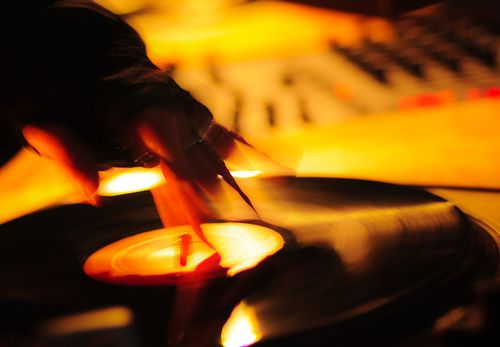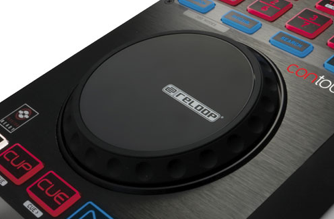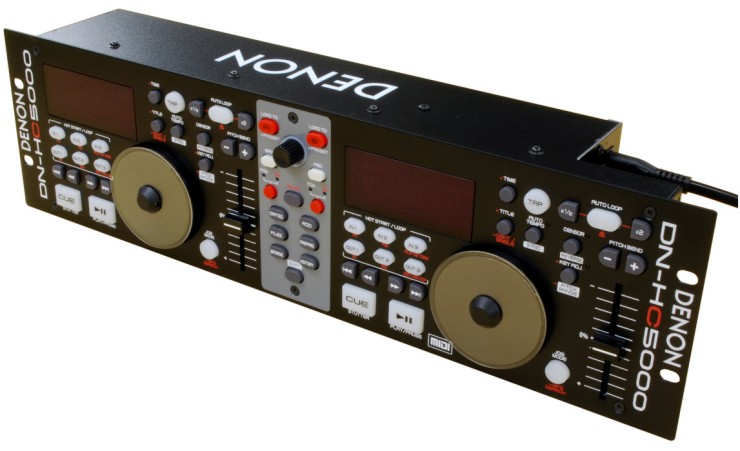
This is the final part of a fortnightly guest series by Chris Cartledge of ohdratdigital.com.
One thing that really separates turntable DJs and digital DJs is a fundamental difference in the tactility of playhead control. With a record, there’s a phenomenal amount of opportunity for a DJ to creatively manipulate the sound that comes from it – a technique that’s come to be called “scratching”. It’s become, much to the chagrin of turntablists the world over, fairly popular to call just about any playhead manipulation “scratching”. But regardless of any creative argument, the very core of scratching is that ability to manipulate the playhead organically, and in the analogue domain, via a turntable. Let’s look a little deeper…
Scratching and digital DJing
Digital DJ equipment has approached playhead manipulation in a variety of different ways; all the way from DVS to motorised mini platters a la NS7 and Denon CD decks, the unmotorised yet tactile mini platters of Pioneer CDJs, down to high quality jogwheels seen on Vestax VCI-300 and NI’s Kontrol S4 and, at the bottom of the pile, mobile DJ rack mini jogwheels – and even the button-only approach…

All of the above facilitate different approximations of the art. And with low latency buttons, syncing, beat cueing and all the other helping hands that digital DJing gives us, it may feel like practising holding onto a “record” and letting go with the right touch is pointless. In fact, without motorised platters, it might not even be possible. That’s not to say, however, that using a platter, or a jogwheel, is obsolete. The best way to get those wheels spinning, certainly in a party situation, isn’t involved, phrase-based scratch noodling, but the little bits here and there that give a set a bit of extra flair. They’re all things that can’t really be done with buttons alone…
Scratching in the kick of a track before letting it go, a spinback at the end of a track, some simple baby scratches and transforms of your DJ name over the top of the tracks – they’re all things that can’t really be done with buttons alone, and all things that will get the crowd nodding. So let’s take a look at a couple of scratches and other platter tricks that we can port over to whatever equipment we’re using…
Four basic scratches to learn…
1. The Baby Scratch
The baby scratch is a simple but effective technique, and being called the baby is apt – it’s the foundation of all scratches. In order to do the baby scratch on a turntable, you place your hand onto it, stopping the sound underneath your fingers. From there, push forward and pull back in smooth, rhythmical motions. Try it just before the first downbeat of a song, and baby scratch that beat forwards and backwards. Do this in time with the beat of another song before letting go and allowing the track to mix, and with very little additional effort you’ve just increased your DJing palette and made a more interesting mix.
2. The Tear
“Tear” describes the function of this scratch pretty accurately; when moving the platter beneath your fingers, make a stop-start push or pull motion to tear the sound into two (or more!) pieces. A baby scratch goes forwards and backwards, a tear might go forwards, forwards backwards, or perhaps backwards, backwards, forwards, backwards, backwards, forwards… you get the idea. You can get some interesting rhythmical variations when using tear scratches – give them a try with a sound effect when playing another beat.

3. The Transform
Transforming requires the crossfader. If you’ve been around long enough to remember Optimus Prime when he was a super tough transforming die cast action hero, not a cheap plastic wuss of a model, you should understand how the transform got its name; in the Hasbro cartoons, the transformers made a “wak-ak-ak-ak-ak” sound as they transformed. You can replicate this sound by clicking the crossfader open and closed to bring the sound in and out as you move the platter, and achieve a hugely rich variety of sounds by combining your babies and tears with them.
4. The Spinback
Okay, so spinbacks aren’t exclusive to records. In fact, CD decks have just as ubiquitous, yet totally unique a sound, and a lot of software has a simple, button activated spinback effect. However, there is a certain je ne sais quoi to a manually performed spinback. You get control over the speed and style, and also… it looks cool – and that’s important too!
Place a finger on the platter at the end of the beat you want to spin back from, and either flick it back as quickly and smoothly as possible, or, and this is my favourite, wind the track backwards rhythmically, trying to match the speed in reverse at first and gradually speeding up until the tension is at breaking point.
Understanding the limitations of your gear
The sliding scale of platter quality on digital DJ gear means that not all techniques that a turntablist does will be directly transferrable to your equipment. One of the biggest limiters will be the accuracy of your platter’s response.

At the very bottom end of quality, you may find that you simply can’t get the accuracy needed to do anything more than the occasional baby scratch – but don’t forget that working within limitations is how all the most creative applications of technology arise!
The other big decider of your hands-on experience will be your software – try experimenting with any sensitivity settings. On a 12″ turntable, standard scratching speed is 33.3 RPM – a single rotation equates to a bar of a 133BPM record.
Depending on the size of your platter/jogwheel, you might want to experiment with reducing this sensitivity so that small movements don’t spin the track into next week…
The bottom line
When all’s said and done, aping turntable effects with your digital DJ gear isn’t what we’re trying to achieve – if you want to get real turntable sounds, there are no shortcuts to simply getting a real turntable. No, the important thing in this piece, and indeed the entire series, is that you gain an understanding of the evolutions and, ahem, revolutions in DJing that have occurred and culminated in the shiny piece of equipment that you have in front of you today – and that you use that understanding to develop your style.
Why reinvent the wheel when you can build on generations of skill base and play your part in advancing the art of DJing yourself? Good luck!
Check out the other parts in this series:
- How To Earn Your DJ Stripes, Part 1: Know The Enemy
- How To Earn Your DJ Stripes, Part 2: Why Connections Matter
- How To Earn Your DJ Stripes, Part 3: Learn to Beatmatch
Do you use scratching in your DJing? Does your controller sound great or is it not really up to it? Or do you think scratching is pointless and distracts from the music? Let us know your thoughts on scratching in the digital age in the comments below.








